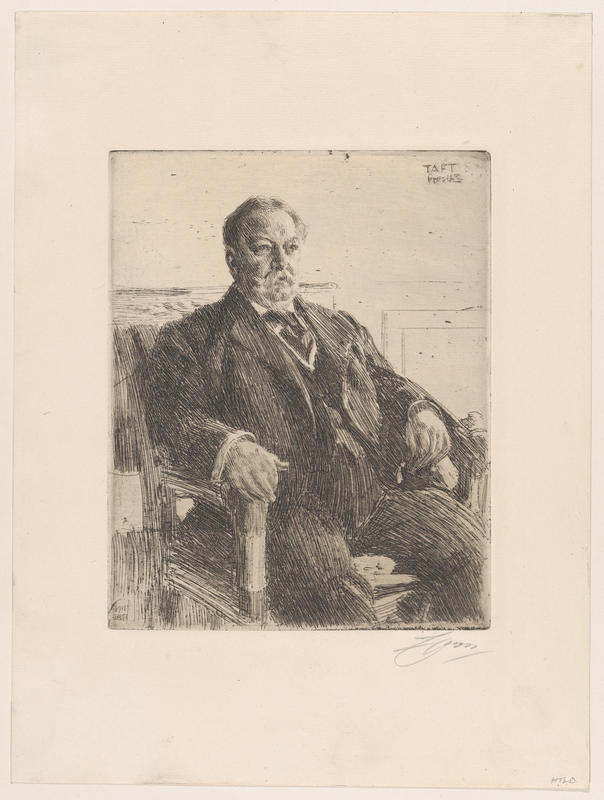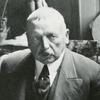More about President William Howard Taft
- All
- Info
- Shop

Contributor
The karmic universe blessed Swedish artist Anders Zorn with an artist’s life in reverse.
Like The Curious Case of Benjamin Button, Zorn essentially aged backward as an artist, achieving the height of his fame at age 29 and slowly fading from popularity after his death in 1920.
Zorn became especially popular in the United States for his painted and etched portraits. Some of his most notable portraits include those of President Theodore Roosevelt, President Grover Cleveland, Frances Cleveland, Andrew Carnegie, and the above William Howard Taft. Due to his popularity in the United States, Zorn flew out to the US frequently to fulfill commissions. On Zorn’s seventh and final trip to the United States in 1911, he etched this portrait of President William Taft, then painted a portrait shortly thereafter. The White House paid only $4,000 for the painted version of the portrait, and it remains there now.
While choosing where to sit with Taft for the portrait, Zorn was led around the by Chief Ceremonial Officer, Archibald Butt. Butt initially advised they do the portrait of Taft in the Blue Room, but Zorn dismissed this idea, and they toured room by room through the State Floor. After a long tour, Zorn ultimately decided that Butt was correct and that the portrait would best be done in the Blue Room. Butt described the odd tour’s culmination back in the Blue Room saying, “Something seemed to catch his artistic fancy here for he made me sit near the south windows while he squinted his eyes and grunted and groaned and finally rubbed his hands together and said it will be fine.”
Zorn never asked his subjects to pose, preferring instead to sketch them as they sat naturally. He actually hated asking subjects to pose, and the critic J. Nilsen Lauvrik described Zorn’s disgust for posed portraits saying that Zorn “abhors posing as much as he hates monogamy.” Zorn’s portrait-based popularity grew because he depicted his subjects naturally and captured their personalities well. He also grew famous for his outdoor nudes, which luckily is not the approach he took in this portrait of Taft.
Zorn’s original dream had been to work as a sculptor, and it was his practice sculpting with a carving knife that made him so skilled at working with an etching needle in pieces like this one. Zorn made a total of 289 etchings over the course of his life.
The large, jovial, and constantly uncomfortable President Taft was best known for his pacifism in war, reduction of tariffs, and expansion of the postal service. He acted notoriously awkward in the White House, having been pushed practically against his will into the spotlight by his predecessor, Roosevelt. He described his four month campaign for President, saying it was “one of the most uncomfortable four months of my life.” For me, it was middle school lunch breaks when my group of friends had to eat our lunches next to a dumpster behind the library to avoid bullies. But hey, good for Taft for having his most embarrassing moment be the process of becoming the President of the United States.
Sources
- "Artists' Life Studies for White House Portraits." WHHA. Accessed August 13, 2018. https://www.whitehousehistory.org/artists-life-studies-for-white-house-….
- Canu, John F. "ART / 4 / 2DAY." Portrait of Charles De Gaulle. Accessed August 13, 2018. http://www.safran-arts.com/42day/art/art4aug/art0822.html#zorn.
- "William Howard Taft." The White House. Accessed August 13, 2018. https://www.whitehouse.gov/about-the-white-house/presidents/william-how….












